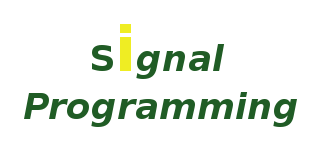Programming Help by Programmer's hub
Signal programming language
Signal programming language is a synchronized data-flow programming language. Signal programming language is a combination of the flows and synchronization. Using SIGNAL allows to specify an application, to design an architecture, to refine detailed components down to RTOS or hardware description. Signal programming language support the various design methodology goes from specification to implementation, from abstraction to concretization, from synchrony to asynchrony. Signal programming language is designed for the real time applications. SIGNAL is a data flow language, which permits a structural description of interconnected processes.
Signal Programming code example
{`
process BIG_BEN =
( ? event TICK;
! integer DAY, HOUR, MINUTE, SECOND; )
(| (SECOND, NEW_MINUTE) := CNT_MOD {60} (TICK, TICK)
| (MINUTE, NEW_HOUR ) := CNT_MOD {60} (TICK, NEW_MINUTE)
| (HOUR , NEW_DAY ) := CNT_MOD {24} (TICK, NEW_HOUR)
| DAY ^= TICK
| DAY := DAY$ + 1 when NEW_DAY default DAY$ init 1
|)
where
event NEW_MINUTE, NEW_HOUR, NEW_DAY;
process CNT_MOD = % Counter modulo N %
`}

The SME Environment
- A reflexive editor
- A graphical modeler based on the TopCased modeling facilities
- A reflexive editor
- A direct connection to the Polychrony services
- A documentation
